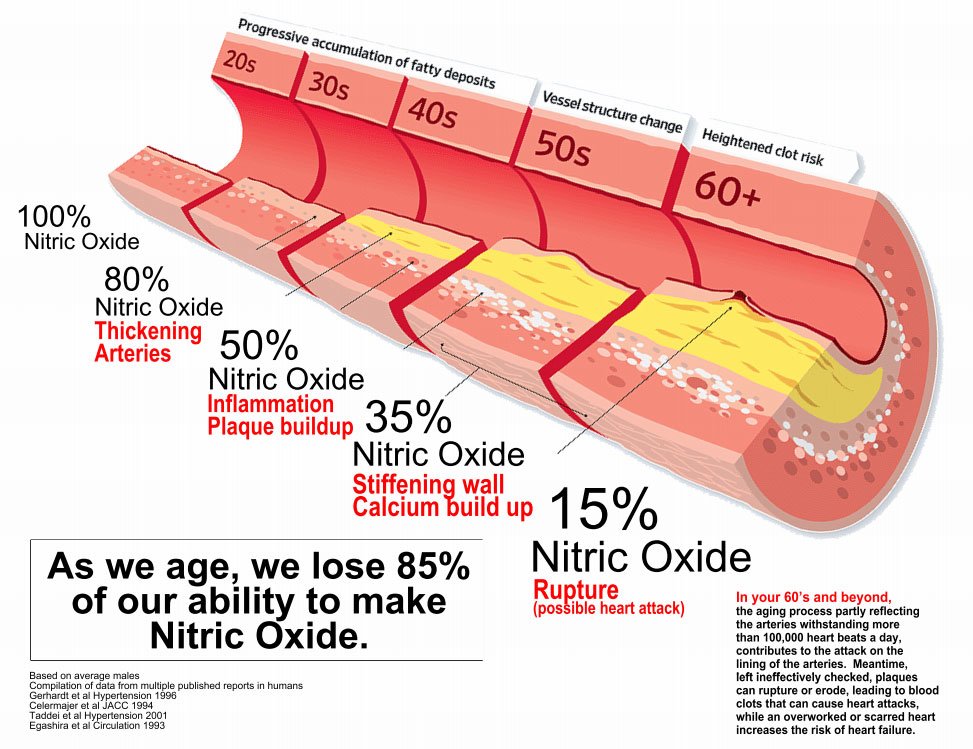Exercise decreases heart attack risk as well as protects the heart in the event that a heart attack takes place. For many years, physicians have been attempting to analyze how this 2nd exercise benefit functions, with the purpose of discovering methods of protecting the heart following a heart attack.
Scientists have now determined the heart’s capability to generate and also keep nitric oxide as a vital way the heart is protected by exercise.1✅ JOURNAL REFERENCE
DOI: 10.1161/CIRCRESAHA.111.241117
The short lived gas nitric oxide produced inside the body activates chemical pathways which relax the blood vessels and enhance the flow of blood and trigger survival pathways.
Together, nitrosothiols and the chemical nitrite, where nitric oxide is joined to proteins by means of sulfur, seem to behave as convertible storage tanks for nitric oxide in cases in which the body requires it, like too little oxygen or blood flow.
The research outcomes reinforce the case for nitrosothiols and nitrite as likely protection agents from heart attack injury.
The research offers new proof that nitric oxide produced while exercising is in fact kept in the heart and bloodstream in the form of nitrosothiols and nitrite. These more stable nitric oxide intermediates seem to be crucial for protection against subsequent heart attacks.
Timing is vital; the exercise benefits did not last. In mice experiments, the researchers revealed that 4 weeks of running on a wheel offered protection from a coronary artery.
When the artery was blocked, the degree of heart muscle injured from the blockage was less following the 4 weeks of exercise. Notably, the mice continued to be protected 7 days when the wheel was removed.
They found that exercise increased levels of the enzyme endothelial NOS (eNOS) which makes nitric oxide.
Furthermore, the amounts of eNOS in tissue of the heart, and nitrosothiols and nitrite within the blood and also heart tissue, remained high for 7 days after exercise stopped, as opposed to other heart enzymes activated by exercise.
The protecting properties of exercise didn’t extend past 4 weeks following the period of exercise, when nitrosothiols and nitrite within the heart reverted to base line.
In mice which don’t have the eNOS enzyme, the heart was not protected from a coronary blockage from exercise, even though these mice seemed to lack the capability to exercise as much as regular mice.
One more molecule that seems to be significant for exercise benefits is the beta-3-adrenergic receptor, which enables cells to react to the hormones norepinephrine and epinephrine.
Every one of the benefits of exercise is lost in mice which are lacking this receptor. An effect of stimulating the receptor seems to be triggering eNOS.



